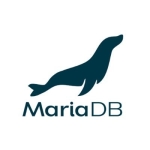Speed and stability of the MySQL DB are the most valuable features since we use it as the data store for most of our web applications.
Before we used MySQL, we used to access the data used for the dynamic web pages directly from our enterprise data stores and that was a massive performance bottleneck. With MySQL, the data can be accessed much faster. This allowed us to create more complicated web systems, such as the corporate message system and a credit card paying system.
From where we are, most of the improvements are being handled. With the new improvements that were introduced in MySQL 5.7 and with the testing that we have done to this point, we are looking at updating our web development environment to make better use of the new features.
With the push from MySQL to implement database engines which can provide the same functionality as PostgreSQL and MongoDB, we are looking at application development that leverages this functionality on our current MySQL production database. Seeing that MySQL can provide noSQL document storage the same way MongoDB can and still have a SQL data source next to it creates the possibility of using the best features of both to achieve the desired application result without changing our current infrastructure drastically.
It must be noted that we are still in the process of experimentation to find the best ways of utilizing these data technologies in our current enterprise applications, but not having to move to other database providers to have the functionality means we can experiment without the need to change our base processes. So when I say that the improvements are being handled the MySQL development team have given us access to functionality which we started to look at about two years ago.
I have used this solution for around seven years with upgrades.
There were no stability issues.
We did experience a few scalability issues, but we decided to rather go for a bigger server than creating a cluster and that worked out very well.
The technical support is very good
The setup was very straightforward since the out-of-the-box MySQL's performance is already very good.
We had to do some tweaking over time, but nothing too major.
The enterprise version has a number of extra components that makes it worth the price, but if all you want is a stable DB for web applications, then stick to the open version.
We use enterprise because we use the PAM connector and the DB firewall, if you are looking at the pricing for implementing a separate data firewall, it is more than what you will pay for this solution.
There were not a lot of other options open to us.
Ensure you know what you want to use it for and make sure it is the right fit for the job.
Do not allow developers to tell you what your DB should look like, as that is the best way to performance problems. Use the MySQL Workbench and MySQL Monitor.



















Workbench is the original GUI for managing MySQL databases it allows to:
* Manage DB - it allows to administer a DB. (by creating a connection to a database).
* Model DB - It allows you to model your database using EER diagrams to represent tables and link between tables. EER diagrams can be transformed to a schema by creating SQL script from the EER diagram. EER diagram can be also produced from an existing DB, by connecting to a database and performing reverse engineering.
* Migrate DB - It also allows you to migrate from another DB to MySQL